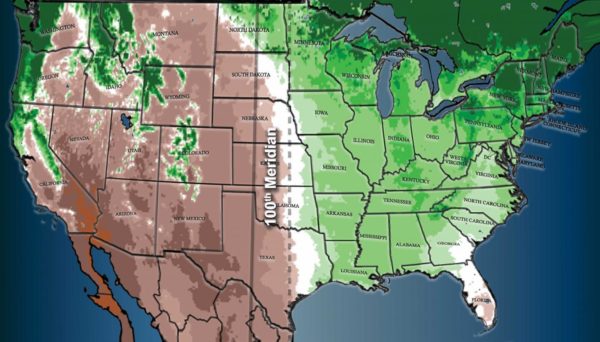Friday April 13th… Dear Diary. The main purpose of this ongoing post will be to track United States extreme or record temperatures related to climate change. Any reports I see of ETs will be listed below the main topic of the day. I’ll refer to extreme or record temperatures as ETs (not extraterrestrials)😊. Here is today’s main climate change related topic:
Signs of Desertification
Happy Friday the 13th everyone. I hope all are avoiding bad luck today. Speaking of one area that has had bad luck weather-wise this year, the western High Plains into the Desert Southwest has been atypically hot and dry. This area is warm and arid anyway, so what is the big deal? With climate change arid areas like western Plains grasslands are susceptible to slipping into a desert climate. In a hotter world deserts expand so what could be happening now from the Texas Panhandle northward into western Kansas is a sign of the Desert Southwest expanding…another canary dying in the coal mine signifying change. A recent Yale publication posited that a huge, climatologically dry area is encroaching upon U.S. farmland:
Quoting from the article:
A North American Climate Boundary Has Shifted 140 Miles East Due to Global Warming
In the late 1800s, geologist and explorer John Wesley Powell first described a clear boundary running longitudinally through North America along the 100th meridian west that visibly separated the humid eastern part of the continent from the more arid western plains. Now, 140 years later, scientists have confirmed that such a sharp climatic boundary exists and that it is slowly shifting east due to climate change — a change that scientists say could have significant implications on farming in the region.
The new research, published in a pair of studies in the journal Earth Interactions late last month, found the divide is created by three factors: the Rocky Mountains stopping moisture from the Pacific Ocean reaching farther inland, Atlantic winter storms bringing moisture to the eastern half of the U.S., and moisture from the Gulf of Mexico moving north and curving eastward during the summer months. The only other clear, straight divide between humid and arid areas on the globe is the one separating the Sahara Desert from the rest of Africa, climate scientist Richard Seager of Columbia University, lead author of the new papers, said in a statement.

Climate change has moved the 100th meridian west climatic divide from its historical position (solid line) 140 miles eastward (dotted line) in recent decades. Modified from Seager et al. Earth Interactions, 2018
The last 24-48 hours have truly been hellish in the western High Plains where the combination of near record high temperatures approaching 100F, drought, and high winds have set of several large fires:
 Radiant Solutions | Weather Desk @Radiant_Weather
Radiant Solutions | Weather Desk @Radiant_Weather


Definitely less common than in California, but enormous Great Plains wildfires can still occur under right conditions. Weather in Oklahoma today was similar to Los Angeles under extreme #SantaAna wind regime: temp >95, humidity <5%, & wind >40 mph. #CAwx#OKwx#CAfire#OKfire




(If you like these posts and my work please contribute via the PayPal widget, which has recently been added to this site. Thanks in advance for any support.)
The Climate Guy




